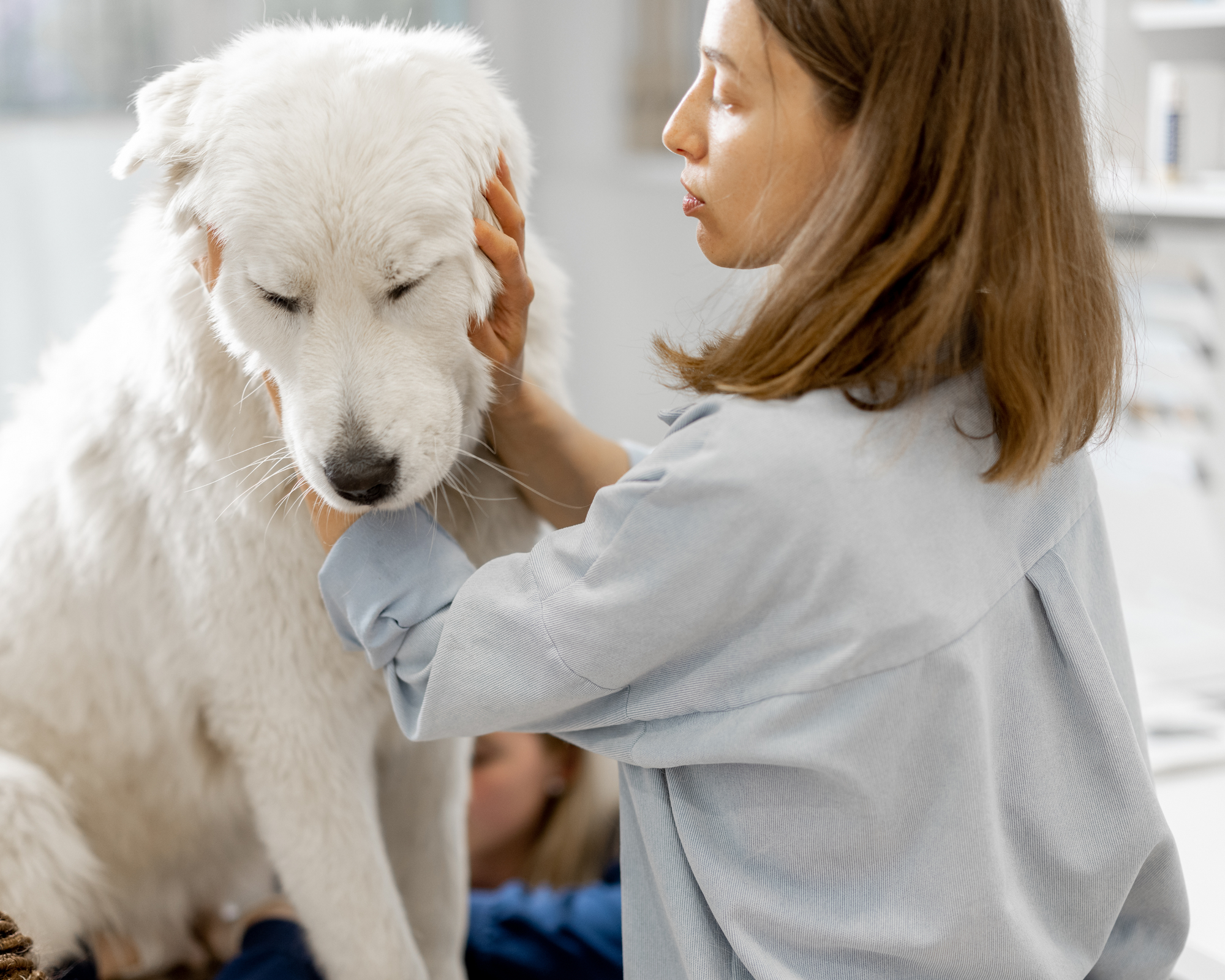

Degenerative Myelopathy in Dogs: What Big Dog Parents Need to Know
If your dog has been wobbling, dragging their back legs, or struggling to stand up, your vet may have mentioned a condition called degenerative myelopathy—or DM. And if you’ve never heard of it, you’re not alone.
DM is a progressive neurological disease that primarily affects the spinal cord. Over time, it causes weakness, loss of coordination, and eventually paralysis in the hind legs. It’s most commonly seen in older dogs—but especially in large and giant breeds like German Shepherds, Great Danes, Boxers, and Bernese Mountain Dogs.
There’s no cure for DM—but that doesn’t mean there’s nothing you can do.
What Is Degenerative Myelopathy?
DM is often compared to ALS (Lou Gehrig’s disease) in humans. It’s caused by a degeneration of the white matter in the spinal cord, which disrupts communication between the brain and the limbs.
What that looks like in your dog:
- Dragging back feet or toes
- Weakness in the hind legs
- Wobbling or swaying while standing
- Difficulty getting up
- In later stages: loss of bladder/bowel control and paralysis
It’s a slow-moving disease, and many pet parents chalk it up to “just old age” in the beginning. But early diagnosis can give you time to create a care plan that maintains quality of life.
How Is DM Diagnosed?
There’s no single test that definitively confirms DM. Most diagnoses are based on:
- Clinical signs and physical exam
- Ruling out other conditions (e.g., arthritis, spinal disc disease)
- Genetic testing for the SOD1 gene mutation (common in at-risk breeds)
Your vet may also refer you to a neurologist for more advanced imaging like MRI to rule out other neurological causes.
Treatment: What You Can Do
DM doesn’t have a cure—but there are ways to help your dog stay mobile, comfortable, and happy for as long as possible.
💡 Supportive care can include:
- Physical therapy and rehab: To maintain strength and coordination
- Acupuncture and laser therapy: To reduce inflammation and support nerve function
- Joint support supplements: To reduce additional stress on joints as mobility declines
- Assistive devices: Like slings, harnesses, or dog wheelchairs
🧠 At The Big Damn Dog Co., we’ve seen firsthand how early intervention matters. When Lucy started showing signs of DM, our vet recommended acupuncture, and we were amazed by how much it helped in the early stages. It opened our eyes to the power of integrative care—and the importance of acting early.
How Long Can a Dog Live with DM?
DM progresses at different rates, but on average, most dogs live 6–12 months after diagnosis. Some live longer with the right support. The key is quality of life—your dog’s comfort, happiness, and dignity should always guide your decisions.
Caring for a Dog with DM: What to Remember
- Don’t wait to act. If something feels off, trust your gut and talk to your vet.
- You are your dog’s advocate. Ask questions, explore therapies, and learn everything you can.
- Comfort is everything. Choose the tools, supplements, and support systems that give your dog the best chance to enjoy their time with you.
- You’re not alone. DM is devastating—but with the right information and support, you can navigate this chapter with clarity and care.
Degenerative myelopathy is hard. There’s no way around that. But knowing what it is—and what you can do—gives you power.
You can’t stop DM. But you can slow its impact, support your dog’s comfort, and make every day count.
And if you ever need a partner in that process—we’re here.
You don’t have to face this alone—but you do have to lead the charge. Be the one who learns, who acts, who advocates. Your dog is counting on you to fight for their best life—and we’ll be right here if you need backup.
